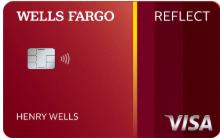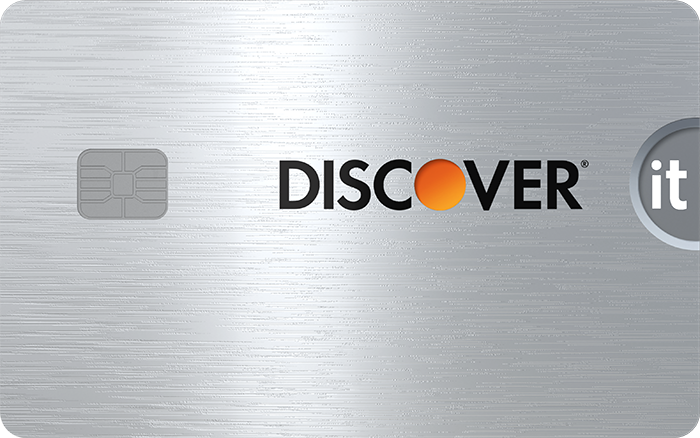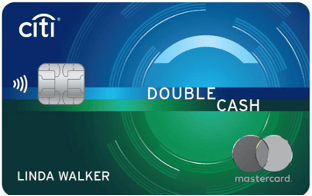Credit card debt is one of the most common financial challenges women+ face. Nobody likes throwing money away on interest payments, but it can sometimes feel impossible to get ahead when your rate keeps stacking up month after month. That’s where a balance transfer credit card could make a real difference.
What are balance transfers on credit cards?
Here’s a balance transfer definition in simple terms: You’re not paying off the debt right away. You’re transferring it from one credit card issuer to another.
Your new card consolidates your existing debt at a lower interest rate. Some credit card providers offer an Annual Percentage Rate (APR) as low as 0% for an introductory period, which can help you avoid interest charges if you pay off your debt quickly.
Wondering how much money you could save, when it makes sense to transfer your balance, or how to choose the best balance transfer card? We’re here to explain everything you need to know.
How Does a Balance Transfer Credit Card Work?
To take advantage of a balance transfer offer, you’ll need to apply for a new credit card with a 0% or reduced introductory interest rate on qualifying balance transfers.
Next, you move your credit card balance (or multiple credit card balances) from your existing card(s) to the new one. Your new issuer pays off your old debt and transfers that debt onto your new card.
That balance transfer means your interest rate is now much more favorable. Most credit card issuers offer a promotional period of 6 to 21 months, during which you can make meaningful progress on reducing–or even eliminating–your balance without being buried in interest charges.
Most lenders charge an upfront fee of 3% to 5% of your total balance transfer, meaning it’s essential to do the math to establish whether it’s worth it or not. In many cases, people see substantial interest savings, especially if they’re transferring high-interest balances on multiple cards.
Benefits of Balance Transfer Credit Cards
If you’re trying to get ahead of high-interest debt, a balance transfer can help you build momentum. Here are a few reasons it could be a smart financial management move:
Save on Interest
With a promotional rate of 0% APR, every cent you repay goes directly toward eliminating your debt instead of interest. That could equate to saving hundreds, or even thousands, of dollars before your introductory rate expires.
But what is a balance transfer credit card going to save you if you don’t get a 0% rate on your existing balances? Don’t worry, you can still save money.
For example, if you transferred $10,000 from a card charging 25% APR to one with a 12% balance transfer interest rate—even after a 3% balance transfer fee—you could end up saving over $350 during the first six months, and more than $650 in every six-month period after that.
Simplify Your Payments
Juggling multiple credit card balances can get messy, especially if they have different due dates, interest rates, minimum monthly payments, etc.
A balance transfer option helps you consolidate debt by moving everything onto a single card with one monthly payment. With a clearer picture of your financial progress, it’s easier to stay organized and avoid missing payments that could negatively affect your credit report.
If you're the type of person who feels overwhelmed by a stack of statements, simplifying down to one payment can offer real relief.
Pay Off Debt Faster
What is a credit balance transfer going to save you in terms of time? Let’s visit another example scenario to see how much faster you could progress when you don’t have compounding interest slowing you down.
Imagine paying $400 per month toward a $10,000 credit card balance with a 25% interest rate. Roughly $208 of that payment is going to interest, meaning less than half is actually paying down the debt.
After transferring to a card with a 0% introductory or promotional rate, you’d be able to put that same $400 payment directly toward the balance. Over 12 months, you could reduce your debt by $1,917 more than you would have on your original card, even after paying 3% in transfer fees. The same progress would’ve taken nearly nine extra months on the old card.
Avoid Taking Out Personal Loans
With the dual benefit of debt consolidation and a lower interest rate, it may make more sense to transfer balances between cards than to take out a loan.
Personal loans typically come with fixed interest rates of between 10% and 20%, depending on your credit history. And, unlike with balance transfer cards, you’ll start paying the interest right away.
If you feel confident sticking to a repayment plan without racking up new purchase charges, a balance transfer option could be a viable way to manage your finances without adding a new loan to the mix.
Create Breathing Room in Your Budget
Lowering your monthly interest payments frees up cash to spend on essentials, emergency expenses, and savings goals like kids’ college funds and bucket list vacations.
Whether you spend the difference on something specific or use it as a buffer to sleep easier at night, lowering your repayments brings peace of mind that’s hard to replicate when you’re dealing with debt the traditional way.
Even if you don’t reach a zero balance by the time your promotional period ends, the break may give you room to breathe, helping you make better budgeting choices that utilize your monthly income more effectively going forward.
When Would It Make Sense to Transfer a Balance?
Taking advantage of a balance transfer promotion may be a smart move if the timing, terms, and your financial habits all line up. Here’s when balance transfer moves make the most strategic sense:
- You have high-interest debt: If you’re carrying balances on cards with 20%–30% APRs, even switching to a moderate interest rate could significantly reduce the total repayment cost.
- You can clear your balance within the introductory period: Repaying everything before the promotional interest rate expires essentially wipes all interest off your final repayments.
- You’re not making new purchases: Avoiding new charges prevents extra interest from piling up and keeps your repayment strategy on track.
- You want to simplify your finances: Consolidating your debt reduces stress and lowers the risk of missing a payment.
Many people find that the best time to transfer debt from one provider to another is when they have a clear plan, a solid offer, and the discipline to stick with it.
How Much Money Could You Save With a Balance Transfer Card?
The real-world dollar value of potential savings depends on multiple factors, including:
- How much debt you have.
- Your current interest rate and repayment timeline.
- How much of the balance you can transfer.
- The terms of your new card regarding the introductory period, balance transfer fee, and APR.
- How quickly you repay the balance.
In general, the more you owe and the higher your APR, the more you may benefit from switching to a lower or 0% promotional interest rate.
Curious to see how much you could save? Use our balance transfer calculator to get an estimate.
How Does Balance Transfer Work? Follow These 4 Steps
While each credit card issuer will handle balance transfer processes differently, most follow the same core process. Here’s what to expect:
Step 1: Apply and Get Approved
Look for a long promotional period, a low or no balance transfer fee, and an introductory interest rate that provides real breathing room. The best offers require good or excellent credit, although some issuers have more flexible requirements.
It’s wise to compare balance transfer offers and apply for the card that best fits your goals. Once approved, you’ll receive a credit limit, which will determine how much of your current debt you can transfer.
Step 2: Request the Balance Transfer
You’ll need to provide account numbers, the details of your old card, and tell your new card issuer how much of each balance you want to transfer. This may involve using an online banking portal, making a phone call, or submitting a secure form by email.
Most balance transfer options allow you to transfer credit card debt as part of the account opening process. However, it can take up to a couple of weeks for the transfer to be completed, so you must keep making minimum payments on your old card(s) in the meantime.
Step 3: Confirm the Balance Was Paid Off
Make sure your previous cards have the correct balance (either zero or a lower figure than before, depending on how much of the balance you transferred). It’s also wise to double-check the balance, agreed-upon promotional rate, balance transfer fee, annual fee, etc., on your new card.
While most reputable banks handle balance transfers smoothly, mistakes can happen. So, be sure to keep records of everything, just in case there’s an issue down the line.
Step 4: Pay Off the Balance on Your New Card
Your goal is to pay off the transferred amount as soon as possible, preferably before the introductory period ends. To make the fastest progress, a common approach is to:
- Make consistent payments.
- Pay more than the minimum when feasible.
- Avoid new purchases.
Staying focused is key to clearing your balance without extra interest charges getting in the way.
Balance Transfer Factors to Consider
While the benefits of moving your balance to a no or low-interest alternative can be significant, there are some hidden costs that could impact your progress.
What is a balance transfer credit card’s biggest financial limitation? That depends on your situation, but it’s important to carefully weigh the following factors against the potential savings before you commit:
- Balance transfer fees: An upfront transfer fee of 3% to 5% could cost you hundreds of dollars. It’s essential that this charge doesn’t outweigh the interest savings.
- Limitations on transfer amounts: If your approved credit limit is lower than the balance you want to move, you may not get the full benefits you were hoping for.
- High interest after the promo ends: If the long-term interest rate jumps to a higher rate than you’re paying now, it may wipe out—or worse, exceed—the initial savings.
- Temporary credit rating drop: The application process will trigger a credit report inquiry, which could temporarily lower your credit score.
When used strategically, a balance transfer credit card can significantly reduce your debt. However, it only works in your favor if you understand the fine print, set realistic goals, and stay focused on the long game.
How to Choose the Right Balance Transfer Card
To get the best deal, consider a balance transfer card that aligns with your timeline, debt amount, and ability to pay it off. Here’s what to look for:
- 100% transparency: Avoid providers with vague language regarding transfer fees, introductory periods, account opening requirements, etc.
- The longest 0% APR: Even 6 months at 0% can make a meaningful dent in your debt, but some providers offer up to 21 months.
- The lowest transfer fee: A slightly shorter 0% period with lower fees may save you more overall than a longer offer with high upfront costs.
- Low ongoing rates: A lower ongoing rate will soften the blow if you still have a balance after the promotional rate expires.
- Spending perks: If you plan to keep the card, consider whether it offers rewards, cash back, or other features that align with your personal finance goals.
Once you’ve got a shortlist, check your credit score independently to see where you stand. If your score is low, you can research more accessible offers or work to improve it before applying.
Top 0% Balance Transfer Cards
The following top-rated providers offer competitive deals to suit a range of personal finance goals. However, availability and terms may vary depending on your credit score.
1. Wells Fargo Reflect Card

Best for: Consumers looking for the longest interest-free period.
With Reflect, you get 0% APR for 21 months on both purchases and qualifying balance transfers–one of the longest no-interest windows out there. If you need more time to repay without pressure, this is a strong option. To qualify for the introductory rate, transfers must occur within 120 days of account opening.
2. Discover it® Chrome Card

Best for: Budget-conscious customers seeking a mix of balance transfer benefits and cash-back rewards.
This card offers 0% APR on balance transfers for 15 months and 2% cash back on your first $1,000 in combined purchases at gas stations and restaurants each quarter.
3. Citi Double Cash® Card

Best for: Users who want cash-back rewards coupled with a long transfer window and fast approval.
With speedy approval times of under a minute (for those who qualify), this card offers 0% APR on balance transfers for 18 months. It's worth considering for anyone looking to combine debt payoff with everyday rewards. For example, you can earn a $200 cash-back bonus after spending $1,500 in the first 6 months.
4. Bank of America® Travel Rewards Credit Card

Best for: Travel-savvy users who want flexibility and everyday rewards.
This card offers 0% APR for 15 billing cycles on purchases and balance transfers that occur within 60 days of opening your account. It also offers 1.5 points on all purchases, and points don’t expire. If you spend $1,000 within the first 90 days of opening your account, you get 25,000 online bonus points you can redeem for a $250 statement credit.
5. Chase Freedom Unlimited® Card

Best for: Anyone looking to combine debt repayment with long-term spending perks.
You get 0% APR for 15 months on both purchases and balance transfers, plus a $200 bonus after spending $500 in the first 3 months. You’ll also earn unlimited 1.5% to 5% cash back on purchases, so it’s a solid choice if you plan to continue using the card after you’ve paid down your transferred balance.
Ready to Pay Off Credit Cards and Start Your Wealth Journey?
If you’re tired of watching your money disappear on high-interest repayments, a balance transfer card could be an effective way to hit reset. But it’s just one piece of the puzzle. Lasting financial transformation requires the right tools and long-term support.
At Dow Janes, we go beyond quick wins. If you're ready to ditch debt and start building long-term wealth, we invite you to watch our Free Masterclass to gain a fresh perspective and expert guidance.
Want to go even further and walk a clear path to financial confidence? Our flagship coaching program, Million Dollar Year, could be just what you’re looking for. Whether you’re transferring a balance or building savings from scratch, we’re here to help you rewrite your money story and create a future you feel truly excited about.
Balance Transfer FAQ
What is a balance transfer in simple terms?
It’s when you move debt from one credit card to another, ideally one with a lower or 0% interest rate, that helps you pay it off faster.
How does a balance transfer work if you have bad credit?
You may still qualify, but your options could be limited. Look for cards designed for fair credit. Just be aware that they may offer shorter promotional periods or higher fees.
What is a balance transfer credit card going to save me every month?
The precise dollar amount you save depends on your balance, rate, and fees.
Does a balance transfer mean that your other credit cards are closed?
No. Your old cards will stay open after a balance transfer unless you choose to close them. So, it’s up to you to monitor them and avoid racking up new charges.
Does a balance transfer hurt your credit score?
The initial credit inquiry might cause a dip. But if you pay down your balance and make on-time payments, your score should bounce back quickly and even improve further over time.
When should I not do a balance transfer?
If you can’t pay off the balance during the promo period, the transfer fee outweighs the savings, or you’re likely to make new purchases. Always do the math first to make sure it’s worth it.
What is the downside of a balance transfer?
While a balance transfer offers a lot of benefits, it can also be a risky move if the promotional period is short and your debt is high. Once the regular APR kicks in, you’ll have to pay interest on your remaining balance.
A Weekly Sip of Our Best Advice
We respect your privacy. We'll use your info to send only what matters to you — content, products, opportunities. Unsubscribe anytime. See our Privacy Policy for details.







